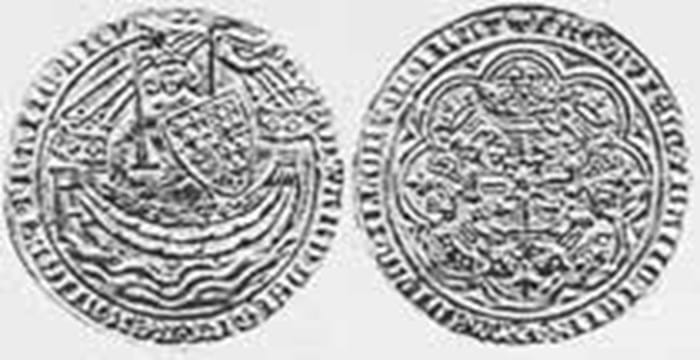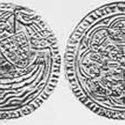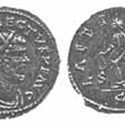You do not have to be all that prosperous to collect Roman coins of the late Empire, particularly if you confine yourself to the bronze issues. Frequently these coins turn up in almost mint state. The Douglas Griffiths collection had just the sort of items that those interested in this period aspire to own. Just about every piece was a beautiful example.
In addition, Griffiths only began the collection in 1968 and so his collection demonstrates just what can be achieved in times when others complain that "there is nothing good left to buy". Nonsense!
This column frequently reports the prices realised for the so-called 'Tribute' penny, the denarius of Tiberius which prompted Jesus to give us the phrase: Render unto Caesar . . .. There was a better than usual example in this sale estimated at £200-250. It made £320.
Of interest to the British collector are the coins of Allectus (AD293-296), the Usurper emperor in Britannia (and Gaul) who was murdered by his chancellor of the exchequer. A much better than usual example of the standard bronze coin was modestly estimated at £100-120 and a bid of £360 was required to take it away.
The reverse of the coins of Julian the Apostate (AD.360-363) bear a splendid pagan bull. He advocated a return to paganism, regarding Christianity as new-fangled and soppy. It seems that there has been a hoard of these coins fairly recently as I have observed quite a few on the market. Anyway there were three in this sale and the most photogenic was estimated at £150-180. It made £190.
Later in the sale was a fine collection of English gold nobles - a third of a pound, i.e. six and eight pence in old money. This coin was first struck by Edward III (d.1377.) and is relatively common, but hard to find with a full edge and a nice image of the monarch. There are very many varieties and the rare ones are hard to estimate. In the market, the going rate for a nice but not rare example has been of the order of £1300-1600. There were 21 of Edward III in this sale. Sixteen of them realised less than an arbitrary £1200. Taking the buyer's premium into account, this indicates a modest slackening in the market for these coins. However, it must be said that there was VAT at the reduced rate of five per cent on this consignment. It seems that these coins are that price sensitive. A particularly appealing example, estimated at £1200-1400, made £1150.
Whatever the truth, it appears that the more common gold coins, both English and continental, of the period of the Hundred Years War, are not currently overpriced.
Griffiths sale sends out the pagans and nobles
THE energy with which Spink pursue their business was made manifest on July 15 when they crammed in another sale which has not been part of their auction schedule in recent years. The total take was £250,850 and, although it was a 519-lot general sale, it offered several homogeneous sections. In all, it taught us really quite a lot about the state of the London coin market.








